Hafeet Rail and Noatum Logistics sign agreement
27 October 2025
Noatum Logistics, a subsidiary of Abu Dhabi’s AD Ports Group, has signed an agreement with Hafeet Rail to use its rail network that will connect the UAE and Oman.
According to the official statement: “The service will run seven container trains per week, each with a capacity of 276 20-foot equivalent units (TEUs), equating to an annual throughput of about 193,200 TEUs.”
Noatum Logistics will use dedicated trains for 20ft, 40ft and 45ft containers.
“The logistics service will cater to trade between the UAE and Oman, including general cargo, manufactured goods, food products, pharmaceuticals, agrifoods and other essential supplies,” the statement added.
Earlier this year, Abu Dhabi-based steel producer Emsteel signed an agreement with Hafeet Rail to enable the transport of raw materials using the Hafeet Rail link.
Emsteel will operate the rail transfer facility in Al-Ain, which includes railcar unloading stations, conveyor systems and stockpile management systems. The facility will handle key materials sourced from Oman, including limestone and red shale, which will be used in Emsteel’s cement production process.
The agreement will enable the transportation of up to 4.2 million tonnes of raw materials a year from Oman to the UAE. The partnership has an initial term of 15 years, with an option to extend for a further 15 years on similar terms.
Hafeet Rail’s latest agreements follow several project agreements the firm signed on the sidelines of the GlobalRail event in Abu Dhabi in October last year.
Project financing agreements worth $1.5bn were also announced on 8 October 2024.
In April last year, the client awarded contracts for three civil works packages for the railway project linking Oman and the UAE.
Exclusive from Meed
-
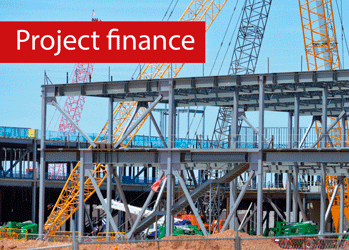 Region sees evolving project finance demand
Region sees evolving project finance demand27 October 2025
-
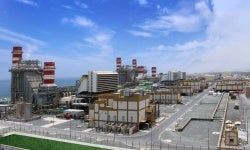 Fujairah F3 power plant begins commercial operations
Fujairah F3 power plant begins commercial operations27 October 2025
-
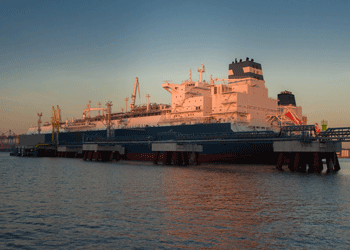 Mena LNG infrastructure spending rises
Mena LNG infrastructure spending rises27 October 2025
-
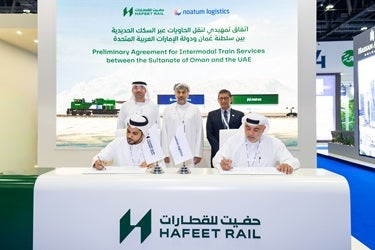 Hafeet Rail and Noatum Logistics sign agreement
Hafeet Rail and Noatum Logistics sign agreement27 October 2025
-
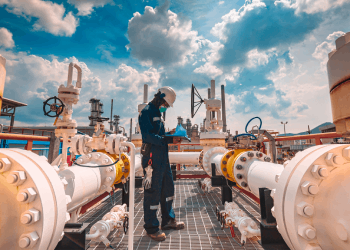 Petrofac restructuring suffers major setback
Petrofac restructuring suffers major setback27 October 2025
All of this is only 1% of what MEED.com has to offer
Subscribe now and unlock all the 153,671 articles on MEED.com
- All the latest news, data, and market intelligence across MENA at your fingerprints
- First-hand updates and inside information on projects, clients and competitors that matter to you
- 20 years' archive of information, data, and news for you to access at your convenience
- Strategize to succeed and minimise risks with timely analysis of current and future market trends

Related Articles
-
 Region sees evolving project finance demand
Region sees evolving project finance demand27 October 2025

The GCC remains in the grip of an infrastructure supercycle that requires project sponsors to seek out the most efficient funding solutions. This places project finance firmly in the frame, with interest piqued by developers’ preference for financing models that match long-term concessions with long-term debt.
Deal advisers note the buoyancy of the Gulf projects market.
“There is a collective appreciation for international capital and international resources and skills that is creating healthy competition in the region, which has not been seen before. This is fuelling some of the project finance boom,” says Andrej Kormuth, head of law firm Bracewell’s Middle East projects practice.
Deferring costs
Non-recourse lending – in which lenders rely on a project’s cash flow – remains a popular method of deferring costs in the Middle East, and one that has grown in volume and size. The availability of long-term offtake agreements with creditworthy counterparties has helped to reinforce investor confidence.
“Gulf states have recognised the budgetary benefit of not having to pay for infrastructure up front or in short order, but rather deferring these costs over a period of time – allowing a bit more budgetary flexibility in relation to critical spending,” says Kormuth.
GCC governments have seen project financing deliver value over the long term, helping them as they map out their long-term economic transformation programmes.
“The procurers have seen how well the project finance deals in the Gulf have been run. They have seen the benefit of having international skills come in that would not historically have been locally available, and of running these assets for the long term,” says Kormuth.

Shifting asset classes
While traditional sectors such as power continue to dominate – according to ratings agency S&P Global, utilities alone accounted for 75% of project finance loans over the past five years – new sectors have come to the fore that are suitable candidates for project finance, including battery storage.
“Over the last 12-18 months, one of the new developments has been the introduction of the new asset class of battery storage projects in jurisdictions such as Abu Dhabi and Saudi Arabia,” says Oliver Irwin, head of project finance at Bracewell.
“These projects are being developed on a very large scale, which gives rise to new challenges from a financing perspective, in terms of considerations for things like split procurement and battery degradation, which are not necessarily features of wind and solar project financings.”
Alongside the almost 90GW of renewable energy that Saudi Arabia will install over the next five years, the kingdom is also planning 48 gigawatt-hours of storage battery capacity by 2030.
There has also been a significant refocusing on the mining sector and digital infrastructure in the region, according to Munib Hussain, a partner at Milbank LLP, a project finance specialist.
“Mining [is seeing increased interest] because of factors such as the energy transition, and the rush to try and secure the minerals that support the energy transition, and as another means of diversifying economies. There is a real drive in the GCC at the moment to try and build out the midstream processing infrastructure for those critical minerals.”
These projects are proving highly adaptable for non-recourse lending structures, backed by the preferred model of a long-term contract with a single offtaker.
Data centres are another area of growth where project finance is likely to make a mark in the GCC, though this may require a steeper learning curve for lenders.
“In the digital space, there are still some challenges to [closing] large-scale project financing,” says Hussain. “But we know there are hyperscalers that are expected to come in with slightly longer-term leases or MSAs [master service agreements] that can support a project financing.”
These may have tenors of around 10-15 years, which Hussain points out is not particularly common, but he says the hyperscalers “see the opportunity to have a foothold there – and so they may be committing for slightly longer tenors”.
While renewable energy and data centres present new avenues for project lending, advisers point out that the Gulf has a surfeit of conventional infrastructure projects that are in need of funding – gas-fired independent power projects, for example, have seen a revival, as have water desalination and water reservoir storage projects.
Ancillary infrastructure around Saudi Arabia’s gigaprojects is also keeping lenders busy. Saudi Power Procurement Company plans to add about 7GW of combined-cycle gas turbine capacity annually over the next five years.
“The energy sector is quite buoyant,” says Bracewell’s Kormuth. “Two years ago, it was almost entirely dominated by renewables. Now, we are seeing quite a significant shift towards conventional, gas-fired baseload power stations.”

International re-entry
In newer sectors such as battery storage, international banks have built up their experience levels and are looking to replicate that in the GCC.
“A lot of the international banks that are supporting the new wave of battery storage projects in the region have experience of financing battery projects in Europe and elsewhere.
“So, while it might be new for the region, it is not necessarily new for those banks,” says Bracewell’s Irwin.
The re-entry of international lenders has changed the pricing equation, too.
“The international commercial banks have become even more competitive, coming into domestic GCC projects, often outpricing the regional banks, which was not the case for the last five years or so,” says Hussain.
Whereas regional banks used to be much more competitive than international banks, various liquidity constraints have meant that the international banks are now coming in at much tighter pricing than ever before.
So, while recent years have witnessed much liquidity and risk appetite from the local and regional banks that have started to play a prominent role in the financing of major infrastructure and energy projects, Bracewell’s Irwin says that in the last 12 months, there has been “a resurgence of sorts from the traditional international banks, leading to Middle East project deals, in particular in Saudi renewables projects”.
New sectors have come to the fore that are suitable candidates for project finance, including battery storage
Financing structures
Refinancing has been a feature of GCC project financing arrangements for many years. The so-called soft mini-perm structure, which involves margin step-ups and cash sweeps that give an incentive to refinance debt over time, retains popularity among sponsors.
 “The primary and preferred method for project financings in the region is a soft mini-perm. It is a proven model that works very well for the region and continues to attract a deep pool of financiers that are willing to lend to the region’s large pipeline of energy and infrastructure projects,” says Irwin.
“The primary and preferred method for project financings in the region is a soft mini-perm. It is a proven model that works very well for the region and continues to attract a deep pool of financiers that are willing to lend to the region’s large pipeline of energy and infrastructure projects,” says Irwin.Export credit agency (ECA) and Islamic tranches remain prominent features of project loans, sometimes in combination. This was the case with UK Export Finance’s guaranteeing of a $700m Islamic Murabaha financing facility to finance the construction of the Six Flags Qiddiya City theme park in Saudi Arabia.
“We continue to see that Islamic financing is a key tool for project sponsors. If you are looking to diversify your funding base, it is now very normal to have an Islamic finance tranche alongside a conventional tranche, as well as an ECA tranche,” notes Irwin.
Capital market instruments are another innovation identified by Gulf deal advisers. Saudi Arabia’s Greensaif pipeline transaction with BlackRock and Saudi Aramco in 2024 was a pipeline monetisation deal that saw BlackRock take a 49% interest in Aramco’s gas pipelines in Saudi Arabia.
“There was a $13.4bn acquisition/stapled financing associated with that, which needed to be refinanced within a certain period of time,” says Hussain.
BlackRock went to various funding sources, including the conventional bank market, the international bond market and the sukuk (Islamic bond) market.
“The bonds and sukuk issued in connection with Greensaif are project bonds, because underlying the payment of the coupon on both was the revenue from the underlying project contracts with Saudi Aramco. These issuances were some of the largest project bonds issued in the region in recent times,” says Hussain.
The Gulf’s pull for project financiers shows no signs of petering out. Lenders have developed a taste for regional risk, and international banks are particularly keen to get back in the game. The mood music is positive.
“We have seen that different types of banks get priced out of the market from time to time, but they invariably look to return to the market because Middle Eastern projects are generally well-structured financings with very robust revenue streams. That gives rise to a lot of enthusiasm to support these projects,” says Irwin.
https://image.digitalinsightresearch.in/uploads/NewsArticle/14955586/main.gif -
 Fujairah F3 power plant begins commercial operations
Fujairah F3 power plant begins commercial operations27 October 2025
State offtaker Emirates Water & Electricity Company (EWEC) and project partners have announced the start of full commercial operations at the 2.4GW Fujairah F3 independent power producer project.
Located in Qidfa, the $1.14bn Fujairah F3 project is the UAE’s largest natural gas-fired combined-cycle power plant.
Developed between the existing Fujairah F1 and F2 facilities, the plant can supply electricity to about 380,000 homes. Ewec is the sole procurer of electricity from the project under a long-term power purchase agreement.
Fujairah Power Company F3, a special purpose company, is developing the project.
It is jointly owned by Abu Dhabi National Energy Company (Taqa, 40%), Japanese firms Marubeni Corporation (20.4%) and Hokuriku Electric Power Company (19.6%), and the UAE’s Mubadala Investment Company (20%).
Financial close was reached in mid-2020 through a consortium of international lenders, including Japan Bank for International Cooperation, Mizuho Bank (Japan), Sumitomo Mitsui Banking Corporation (Japan), BNP Paribas (France) and Standard Chartered (UK).
South Korea’s Samsung C&T was awarded the engineering, procurement and construction contract, while engineering consultancy was provided by Austria’s ILF Consulting and Germany’s Fichtner Consulting.
The facility is equipped with three Mitsubishi Power M701 JAC gas turbines, each weighing more than 500 tonnes, integrated with heat recovery steam generators.
Mitsubishi Power was operating under the name Mitsubishi Hitachi Power Systems at the time of the contract award, before Hitachi exited the joint venture in 2021.
Construction of Fujairah F3 was completed in late 2024.
https://image.digitalinsightresearch.in/uploads/NewsArticle/14953479/main.jpg -
 Mena LNG infrastructure spending rises
Mena LNG infrastructure spending rises27 October 2025
This package also includes: Gulf LNG sector enters a new prolific phase

The Gulf states – in particular Qatar, Oman and the UAE – are dominating the liquefied natural gas (LNG) production and export race in the Middle East and North Africa (Mena) region, as well as globally.
With the energy transition gaining momentum worldwide, and driven by a need to increase the share of gas in their energy mixes, other regional countries are also investing in building LNG import infrastructure.
Kuwait’s state-energy conglomerate, Kuwait Petroleum Corporation (KPC), is going through the final approval processes for a planned project to add a natural gas reliquefaction unit to Kuwait’s permanent LNG import facility.
The final investment decision for the project was approved by KPC subsidiary Kuwait Integrated Petroleum Industries Company (Kipic) in January. The front-end engineering and design (feed) study for the project was completed in November 2024, according to Kipic.
This project is being developed to eliminate the flaring of boil-off gas, which occurs when supply rates from LNG import facilities drop below minimum design thresholds. The new unit will reliquefy natural gas through cooling processes and return it to storage tanks in liquid form.
 Importing gas
Importing gasIraq is presently reliant on imported gas from Iran in order to address its domestic needs. The country has sufficient gas reserves to meet its domestic demand, but it has failed to develop the necessary infrastructure to capture, process and transport the gas to end-users.
However, in October, US-based Excelerate Energy announced that it had won a contract to develop an integrated floating LNG (FLNG) import terminal in Iraq. Development of the project will be led by Excelerate in coordination with the Iraqi government.
The FLNG facility will be developed at Khor Al-Zubair port in Basra and will have a capacity of 500 million standard cubic feet a day (cf/d).
Plans are also under way to build further LNG reception infrastructure, including a jetty and a floating storage and regasification unit (FSRU), at Iraq’s Al-Faw Grand Port.
Jordan, which also relies heavily on natural gas for its power and industrial needs, has pushed ahead with plans to increase LNG imports by developing a new LNG terminal.
In August 2024, Jordan’s Aqaba Development Corporation (ADC) awarded the main contract for a project to develop the Sheikh Sabah Al-Ahmad Al-Jaber Al-Sabah LNG onshore regasification facility at the port of Aqaba.
The contract was won by a consortium of Singapore-based AG&P and South Korea’s Gas Entec, along with their local partner, Jordan’s Issa Haddadin. AG&P has majority ownership of Gas Entec and ADC is owned by the Government of Jordan and the Aqaba Special Economic Zone Authority.
The facility will have the capacity to process 720 million cf/d of natural gas. The project is scheduled to be completed, commissioned and delivered within 22 months, with the project due to be commissioned by the second quarter of 2026.
The new permanent LNG import terminal is expected to replace an existing FSRU located in Aqaba port that began operations earlier this year.
Jordan … has pushed ahead with plans to increase LNG imports by developing a new LNG terminal
Building infrastructure
Egypt already has two LNG export terminals, located at Idku and Damietta. The facilities enable the export of LNG from domestic fields and from regional partners.
The country is now exploring plans for an LNG terminal in Port Said, according to a recent statement from the Petroleum & Mineral Resources Ministry. Karim Badawi, the petroleum & mineral resources minister, has met with the chairman of the Suez Canal Authority, Osama Rabie, to discuss the establishment of the terminal, which will supply the authority’s vessels.
In Algeria, national oil and gas company Sonatrach has brought a processing train back online at the Arzew-Bethioua LNG terminal as part of a major project to upgrade the facility.
The Arzew-Bethioua terminal is one of the oldest operational LNG export terminals. The train, known as T-300, became operational after a new main cryogenic heat exchanger (MCHE) was commissioned.
The upgrade is part of a contract with US-based Honeywell to replace four MCHEs at the facility. Originally signed with Air Products, Honeywell acquired the contract when it bought Air Products’ LNG process technology and equipment business in September 2024.
The work on the Algerian LNG terminal is being led by state-controlled Societe de Maintenance Industrielle d’Arzew (Somiz). As part of the upgrade, each of the train’s existing capacities of 75,000 tonnes a year (t/y) is being increased to 1.3 million t/y. A total of 5.2 million t/y of LNG capacity is set to return once all four units are fully back online.
Meanwhile, Morocco’s Energy Transition & Sustainable Development Ministry is progressing with an LNG infrastructure project that includes an import terminal, pipelines and a gas power station. Located at Nador West Med Port, the terminal is expected to have the capacity to import 500 million cf/d.
The scope of the LNG terminal portion of the project includes the design, construction, equipment, operation and maintenance of all offshore and onshore infrastructure elements of the terminal. It also includes all high-pressure gas systems.
A dedicated berth is expected to be developed at the port. The terminal will either be an FSRU or a floating storage unit that has the regasification element developed on the jetty.
Nador West Med Port is currently under construction and is expected to achieve commissioning by the end of 2026.
https://image.digitalinsightresearch.in/uploads/NewsArticle/14953426/main.gif -
 Petrofac restructuring suffers major setback
Petrofac restructuring suffers major setback27 October 2025
The UK engineering company Petrofac, which is working on projects worth billions of dollars across the Middle East and North Africa (Mena) region, has said that its planned restructuring is “no longer deliverable in its current form”.
The statement has raised concerns among stakeholders in the region about potential disruption to projects.
Petrofac is actively working on projects in the UAE, Algeria, Kuwait and Bahrain. Projects in the UAE include an engineering, procurement and construction management (EPCM) contract awarded by Adnoc Gas in June.
The company’s restructuring plans have been derailed by the cancellation of a contract by the electricity transmission system operator TenneT.
The engineering, procurement, construction and installation (EPCI) contract that was terminated was for work on a project to connect wind farms to the European electricity grid.
In its latest statement, the company said: “Having carefully assessed the impact of TenneT’s decision, the board has determined that the restructuring, which had last week reached an advanced stage, is no longer deliverable in its current form.
“The group is in close and constant dialogue with its key creditors and other stakeholders as it actively pursues alternative options for the group.
“In the meantime, Petrofac remains focused on serving its clients and maintaining operational capability and delivery of services across its businesses.”
Possible collapse
In the wake of Petrofac’s latest statement, there have been widespread reports that administrators are now “on standby” in case the company collapses.
The directors of Petrofac have lined up the advisory firm Teneo for an administration process, which could be confirmed early this week, according to a Sky News report.
The company’s board, chaired by former Anglo American finance director Rene Medori, has been holding emergency talks, the report said.
Rollercoaster restructuring
The latest statement from Petrofac comes less than two months after the company announced it had resolved a dispute with Korea’s Samsung E&A and Italy’s Saipem, which had been disrupting the planned restructuring.
Although Petrofac has been struggling with financial difficulties, over the past 12 months it has continued to win new project contracts in the Mena region.
Aside from the $1.2bn contract that Adnoc Gas awarded the company in June, in May Petrofac submitted the lowest bid for the Kuwaiti oil project focused on the installation of a separation gathering centre (SGC) known as SGC-2.
It submitted a price of KD422.45m ($1.37bn).
Additionally, in November last year, Petrofac announced winning a contract from Bapco Upstream to provide services to increase productivity at the Bahrain Field.
The duration of the contract is two years, and the scope covers delivery of well hook-ups, associated pipelines and tie-ins for several new wells at the Bahrain Field, also known as the Awali field.
https://image.digitalinsightresearch.in/uploads/NewsArticle/14949404/main.png -
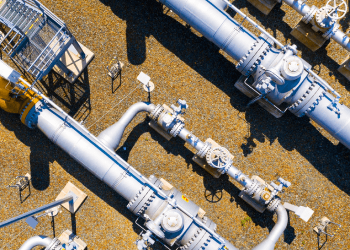 Chinese contractor commissions third train at Iraq oil project
Chinese contractor commissions third train at Iraq oil project27 October 2025

A third oil processing train has been successfully put into production at Iraq’s West Qurna-1 oil field, according to industry sources.
US-based ExxonMobil awarded a $316m engineering, procurement and construction (EPC) contract for the second and third crude processing trains at the field to China Petroleum Engineering & Construction Corporation (CPECC) in February 2022.
ExxonMobil has since exited Iraq, handing over its stake in the West Qurna-1 field to PetroChina, the listed arm of state-controlled China National Petroleum Corporation (CNPC).
Production is being ramped up from the third train, known as OT3, with the aim of achieving a total crude output of 210,000 barrels a day (b/d) from the entire facility.
The facility’s flare was lit on 20 October, and the inlet manifold valve was opened to allow oil into OT3 on 21 October, according to an industry source.
The second train, known as OT2, was brought online on 28 July this year. The company said that on 29 June, all facility units were connected and the plant became fully operational.
Iraq is currently seeing growing engagement in its oil and gas sector from international companies.
Earlier this month, US oil and gas producer ExxonMobil signed a heads of agreement with the Iraqi government to help develop the country’s hydrocarbon resources and boost exports.
The non-binding agreement with ExxonMobil follows several other deals with international oil companies, including US-based Chevron, London-headquartered BP and France’s TotalEnergies.
https://image.digitalinsightresearch.in/uploads/NewsArticle/14949402/main.png




 Gulf LNG sector enters a new prolific phase
Gulf LNG sector enters a new prolific phase